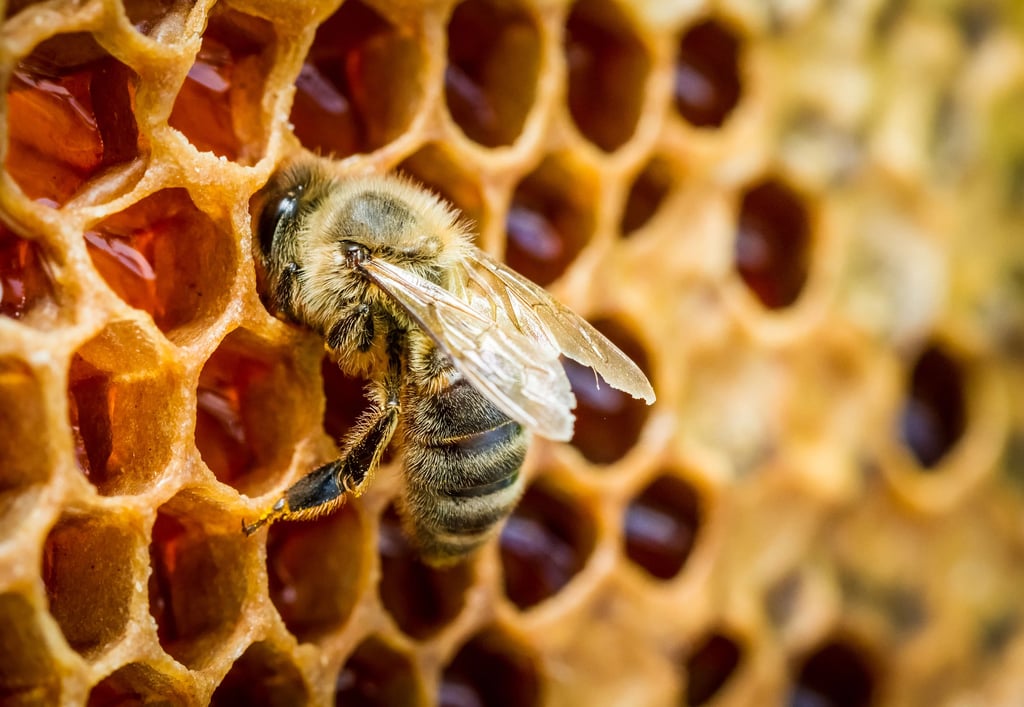The Science of Sweetness: Unveiling the Hidden Wonders of Bees and Honey
The Biology of Bees: Small Creatures, Big Impact


Introduction
The humble honeybee, Apis mellifera, is more than a buzzing backyard visitor—it is a biochemical marvel, a keystone of ecological stability, and a tireless laborer in global agriculture. As interest in sustainable farming, natural remedies, and pollinator conservation grows, so too does the need for clear, scientifically credible information about bees and their most iconic product: honey.
This blog explores the biology, environmental role, and nutritional significance of bees and their products, weaving together hard science, fascinating facts, and practical knowledge. For businesses and beekeeping professionals, understanding these intricacies is more than educational—it’s essential. Companies like Heliotrope Bee, a global leader in protective bee apparel, are helping modern beekeepers work safely and effectively while contributing to a sustainable future.
The Biology of Bees: Small Creatures, Big Impact
A Superorganism of Efficiency
A honeybee colony operates as a highly structured superorganism. A single colony consists of:
One queen bee, who lays up to 2,000 eggs per day
10,000 to 60,000 worker bees, all sterile females
A few hundred drones, whose sole purpose is mating
Worker bees perform specialized tasks based on age, from cleaning and nursing to foraging and guarding the hive. Their efficiency is unmatched: a single bee may visit over 2,000 flowers in one day, yet only produce 1/12 of a teaspoon of honey in her lifetime.
Communication and Navigation
Bees use pheromones, vibrations, and the famous waggle dance to communicate. The waggle dance conveys the direction and distance of nectar sources using angle and duration, relative to the sun. Their navigation is supported by polarized light sensitivity and magnetic field detection, making them among the most sophisticated non-verbal communicators in the animal kingdom.
The Science of Honey: Composition and Capabilities
A Complex Nutritional Profile
Honey is more than a sweetener. It's a complex biological substance made from nectar that is enzymatically altered and dehydrated by bees. On average, honey contains:
80% natural sugars (mainly glucose and fructose)
18% water
2% proteins, amino acids, vitamins, and minerals
Trace elements include calcium, magnesium, potassium, iron, and zinc. Honey is also rich in polyphenols and flavonoids, which possess antioxidant and anti-inflammatory properties.
Sustaining Human Life
One of the most astounding facts is honey’s ability to sustain human life on its own. It contains a complete set of essential amino acids and enough calories to meet basic energy needs. In survival situations, honey is used as a single-source sustenance, due to its caloric density and antimicrobial resistance.
Propolis: The Hive’s Natural Pharmacy
Propolis, a resinous mixture collected by bees from plant buds, is used within the hive for structural and sanitary purposes. Scientifically, it is known for its:
Broad-spectrum antimicrobial activity
Wound-healing acceleration
Antioxidant and anti-inflammatory properties
Modern research identifies propolis as a natural antibiotic, effective against pathogens resistant to synthetic drugs. It contains more than 300 compounds, primarily polyphenols, making it valuable in both traditional and modern medicine.
Honey’s Shelf Life: The Eternal Food
Honey is the only food known to never spoil. Archaeologists have discovered edible honey in 3,000-year-old Egyptian tombs. This durability is due to:
Low moisture content, which inhibits microbial growth
Acidity (pH between 3.2 and 4.5), creating a hostile environment for bacteria
Hydrogen peroxide, naturally produced by the enzyme glucose oxidase
These natural preservatives make honey not only safe for indefinite storage but also ideal for wound treatment and food preservation in ancient and modern contexts alike.
Specialized Honeys: Nature’s Artisan Varieties
Manuka Honey
Produced by bees pollinating the Leptospermum scoparium bush in New Zealand, Manuka honey is prized for its high concentration of methylglyoxal (MGO)—a compound responsible for its powerful antibacterial properties. Research supports its use in:
Treating infected wounds and ulcers
Managing oral and digestive bacterial imbalances
Acacia Honey
Light in color and high in fructose, Acacia honey crystallizes slowly and is ideal for diabetic-friendly diets due to its low glycemic index. It is also noted for its:
Gentle floral aroma
High antioxidant content
Superior shelf stability
These specialized honeys reflect the botanical diversity of the regions bees forage in—each jar telling a unique environmental story.
Bees as Ecological Engineers
Pollination and Food Security
Bees are responsible for pollinating over 75% of global food crops. This includes not only fruits and vegetables but also seeds, nuts, and fibers. Without bees, staple foods like apples, almonds, and blueberries would become scarce.
Economic studies estimate that bee pollination adds over $200 billion annually to global agriculture. Declining bee populations, therefore, pose a significant threat to food security and biodiversity.
Environmental Indicators
Bees are considered bioindicators—their health reflects the state of the surrounding ecosystem. Pesticide overuse, monoculture farming, and climate change all leave measurable imprints on hive productivity and behavior.
Supporting bee populations through sustainable practices and protective equipment, like the gear provided by Heliotrope Bee, contributes directly to ecological resilience.
The Role of Modern Beekeeping
Beekeepers today are not just honey harvesters—they are data-driven custodians of biodiversity. Modern apiculture integrates:
Smart hive sensors to monitor temperature, humidity, and bee activity
AI-powered image recognition to detect diseases
Remote feeders and scales to automate colony care
Even with cutting-edge tools, physical safety remains non-negotiable. Protective suits and gloves, like those from Heliotrope Bee, allow for close inspection and intervention without compromising beekeeper or bee safety. Since 2012, the company has set industry standards for quality and innovation, equipping beekeepers worldwide.
A Future Dependent on Bees
The science behind bees and honey is both rich and urgent. These insects play roles in climate resilience, medicinal discovery, and global nutrition. Protecting them isn't just ecological—it’s existential.
Whether you're a researcher, farmer, or naturalist, understanding the scientific brilliance of bees opens a gateway to more sustainable living and thinking. From the hive’s internal pharmacy to the global supply chain, the story of bees is interwoven with the future of humanity.
To join the community of responsible beekeepers, equip yourself with the right tools and knowledge. Explore the full range of professional protective apparel at www.heliotropebee.com or reach out to the team at sales@heliotropebee.com.


